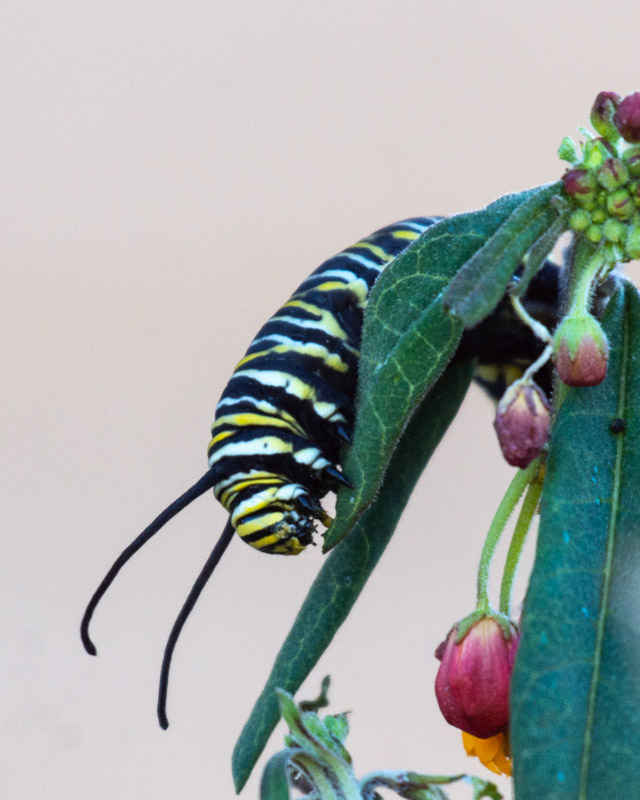By Dan Weisz
Even though the high temperature today is in the mid-70’s, we are in the week following Thanksgiving so this is technically wintertime! And yet, Tucson in the winter is still home to butterflies and caterpillars. I was thrilled that my visiting three-year old grandson could see butterflies and a number of caterpillars, watch the caterpillars eating leaves, see their poop on the ground, and hold and touch caterpillars of all sizes.
Seeing these butterflies and caterpillars in the Foothills can be easy if you plant any number of milkweed plants. Check with a good garden supply store to ask for plants that will attract butterflies. Here is the caterpillar stage of a Queen Butterfly. Queens are very common in Tucson. You can identify their caterpillars by their color but they look very similar to caterpillars of Monarch Butterflies. You can distinguish between the two types by their antennae-like structures on them. Queen caterpillars have three sets of hat looks like antennae but are actually called tentacles and function as sense organs.
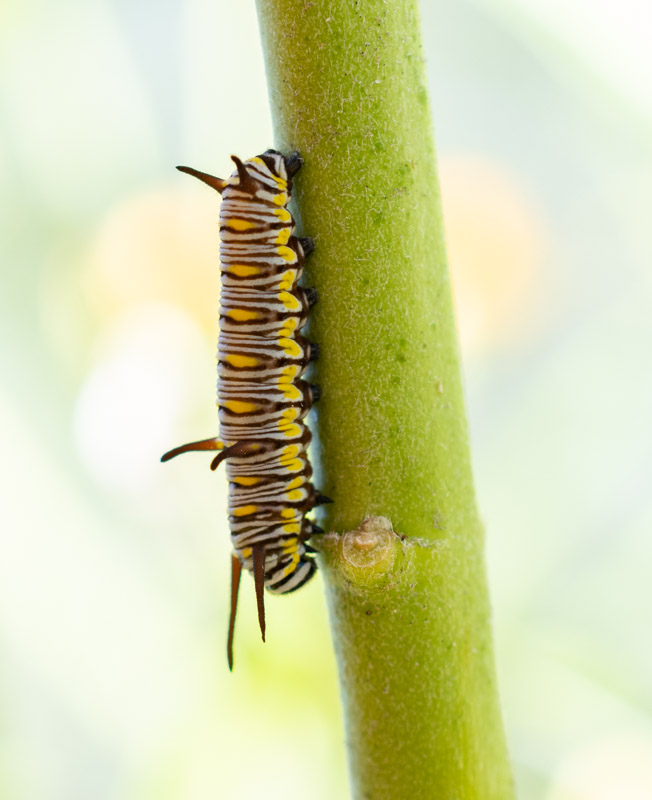
Another look at the caterpillar of a Queen Butterfly heading down the plant.
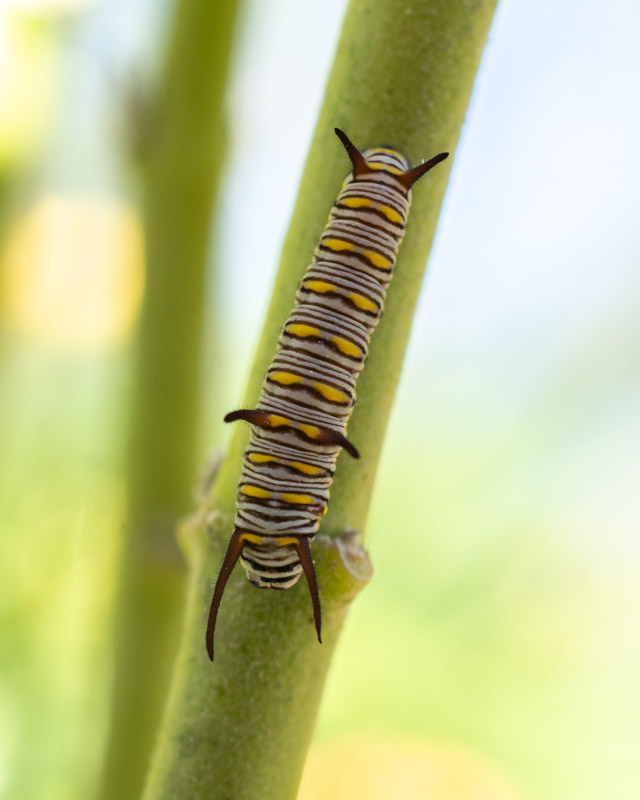
And here is a Queen Butterfly on the milkweed plant.
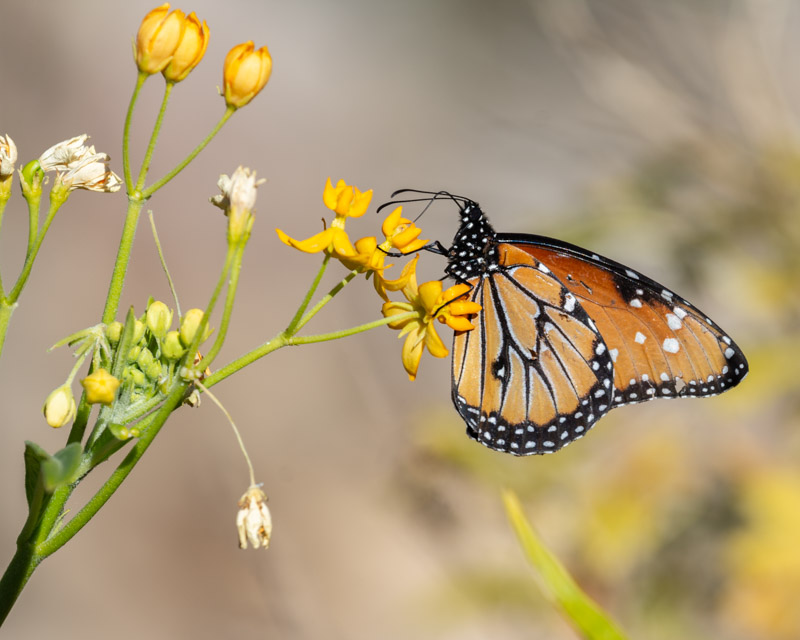
Now here is the caterpillar of a Monarch Butterfly. Notice only two sets of “antennae”? I also noticed that these caterpillars appeared darker, with more pronounced black bands on them than the Queen caterpillars.
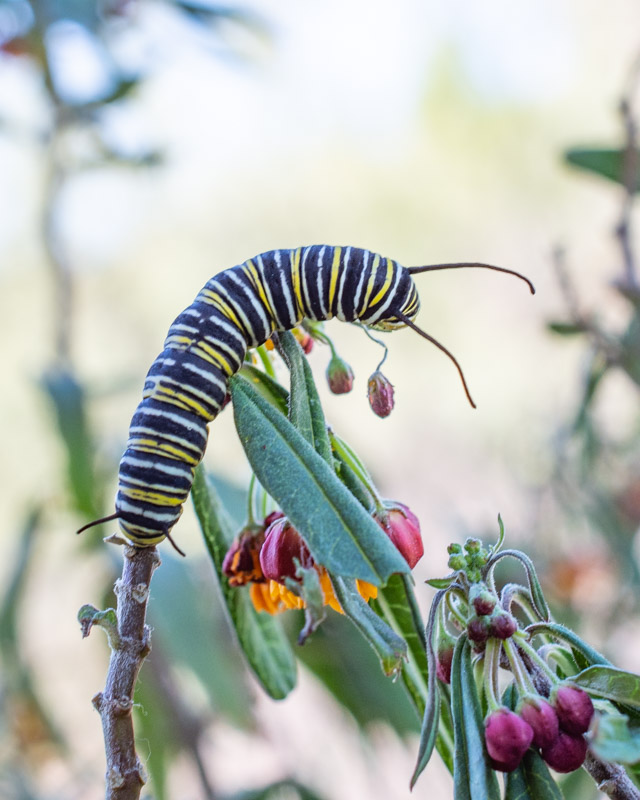
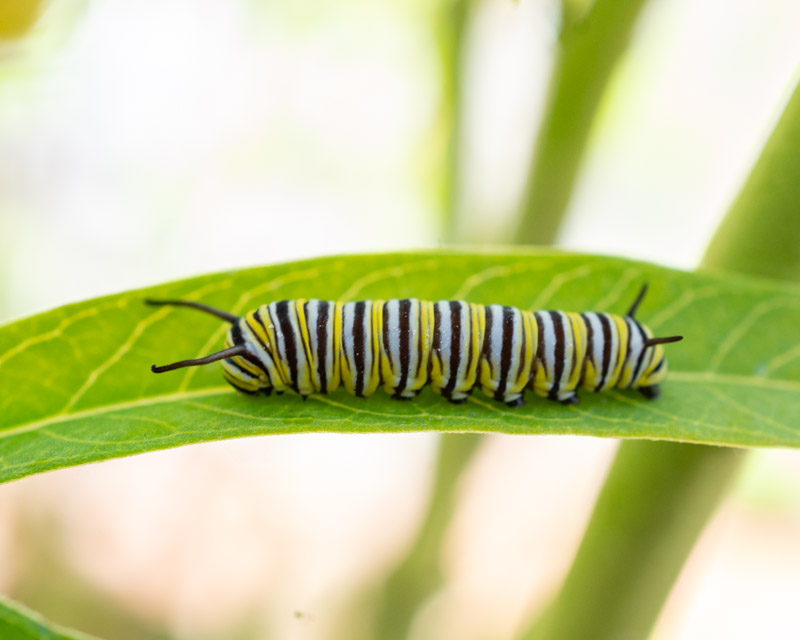
In this close-up you can see the six little black feet. Insects have six feet. Caterpillars have other ‘gripping’ feet called prolegs that they use to assist in climbing (more easily seen in the photo above). The insect loses those ‘feet’ in the adult stage.
